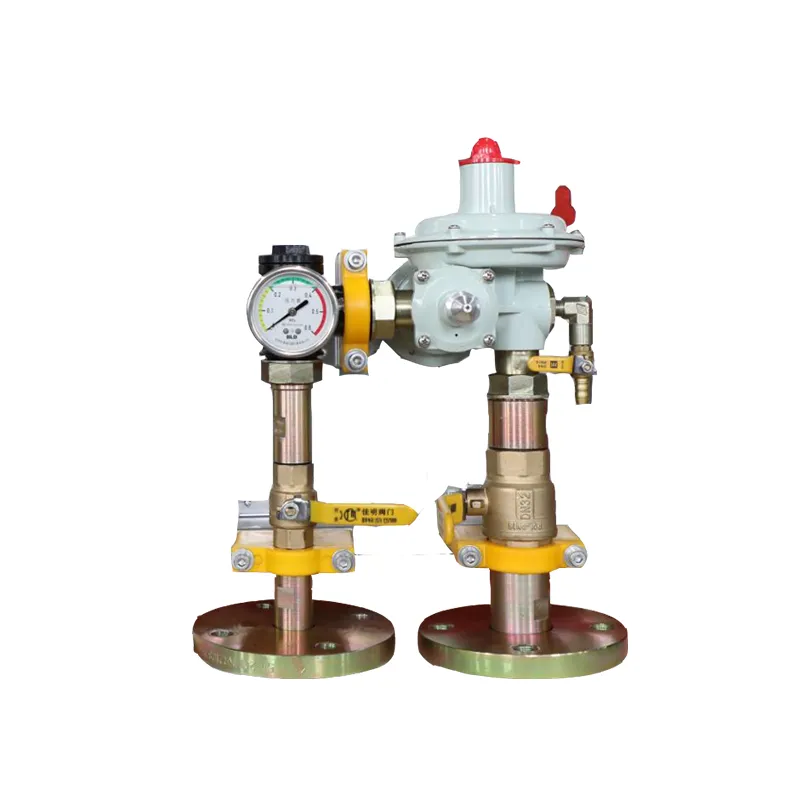
Dec . 23, 2024 02:51
Back to list
Safety Relief Valve for Gas Systems to Prevent Overpressure Risks
Safety Relief Valve for Gas Systems Ensuring Safety and Efficiency
In modern industrial applications, the safety of gas systems is paramount. One critical component that plays a pivotal role in safeguarding these systems is the safety relief valve (SRV). This crucial device is designed to prevent overpressure conditions that could lead to catastrophic failures, ensuring both operational efficiency and worker safety. In this article, we will delve into the function, importance, and maintenance of safety relief valves in gas systems.
Understanding Safety Relief Valves
A safety relief valve is a pressure safety device that automatically releases a substance from a boiler, pressure vessel, or other pressurized system when the pressure or temperature exceeds preset limits. This helps to prevent equipment failures and potential explosions or leaks. In gas systems, SRVs are typically mounted on pipelines, storage tanks, and reactors to manage excess pressure, ensuring that it remains within safe operating limits.
The operation of a safety relief valve is straightforward. Under normal operating conditions, the valve remains closed, containing the pressure within the system. In the event of a pressure spike, the valve opens, allowing excess gas to escape safely into the atmosphere or a designated disposal system. Once the pressure returns to acceptable levels, the valve automatically reseals, restoring normal function to the gas system.
Importance of Safety Relief Valves
The importance of safety relief valves cannot be overstated. First and foremost, they are essential for protecting human lives. Gas systems are often utilized in environments where pressure can build up due to various factors, including equipment malfunction, temperature fluctuations, or changes in gas composition. Without proper pressure regulation, these systems can pose serious risks of gas leaks, fires, or explosions.
Additionally, SRVs play a crucial role in maintaining the integrity of gas systems. Excess pressure can damage equipment and infrastructure, leading to costly repairs and downtime. By preventing overpressure conditions, safety relief valves not only enhance safety but also contribute to the overall efficiency and longevity of gas systems. This proactive measure helps to mitigate financial losses associated with equipment failure and operational interruptions.
Types of Safety Relief Valves
.
1. Spring-loaded valves These are the most widely used type of SRVs. They operate by utilizing a spring mechanism to hold the valve closed until a predetermined pressure is reached. Once that pressure threshold is surpassed, the spring compresses, allowing the valve to open and release excess pressure.
صمام تنفيس أمان الغاز

2. Pilot-operated valves These valves use a small pilot valve to control the opening and closing of a larger main valve. They are ideal for high-pressure applications, providing precise control over the release of pressure.
3. Balanced bellows valves These are used in applications where back-pressure could affect the valve's performance. The bellows design helps maintain consistent performance by compensating for the varying pressures within the system.
Maintenance of Safety Relief Valves
Regular maintenance of safety relief valves is critical for ensuring their proper function. Over time, these valves can become corroded or stuck due to the accumulation of debris or changes in the operating environment. Therefore, routine inspections and testing are essential to verify that they are operating correctly.
Key maintenance practices include
1. Visual inspections Regularly check for signs of wear, corrosion, and leaks around the valve.
2. Functional testing Periodically test the valve to ensure it opens at the designated pressure. This can often involve simulating pressure conditions to observe the valve's response.
3. Cleaning Maintain the cleanliness of the valve and surrounding components to prevent blockages that could impede function.
4. Documentation Keep detailed records of maintenance activities, inspections, and any corrective actions taken. This documentation is vital for regulatory compliance and for tracking the performance of safety relief valves over time.
Conclusion
In conclusion, safety relief valves are essential components of gas systems, providing a critical safety mechanism to prevent overpressure conditions. Their role in protecting lives, maintaining system integrity, and enhancing operational efficiency cannot be overstated. Regular maintenance and inspections are necessary to ensure their effectiveness, contributing to safer and more reliable gas systems in various industrial applications. As industries continue to evolve, the importance of robust safety measures, including effective safety relief valves, will only grow.
Latest news
-
Safety Valve Spring-Loaded Design Overpressure ProtectionNewsJul.25,2025
-
Precision Voltage Regulator AC5 Accuracy Grade PerformanceNewsJul.25,2025
-
Natural Gas Pressure Regulating Skid Industrial Pipeline ApplicationsNewsJul.25,2025
-
Natural Gas Filter Stainless Steel Mesh Element DesignNewsJul.25,2025
-
Gas Pressure Regulator Valve Direct-Acting Spring-Loaded DesignNewsJul.25,2025
-
Decompression Equipment Multi-Stage Heat Exchange System DesignNewsJul.25,2025

